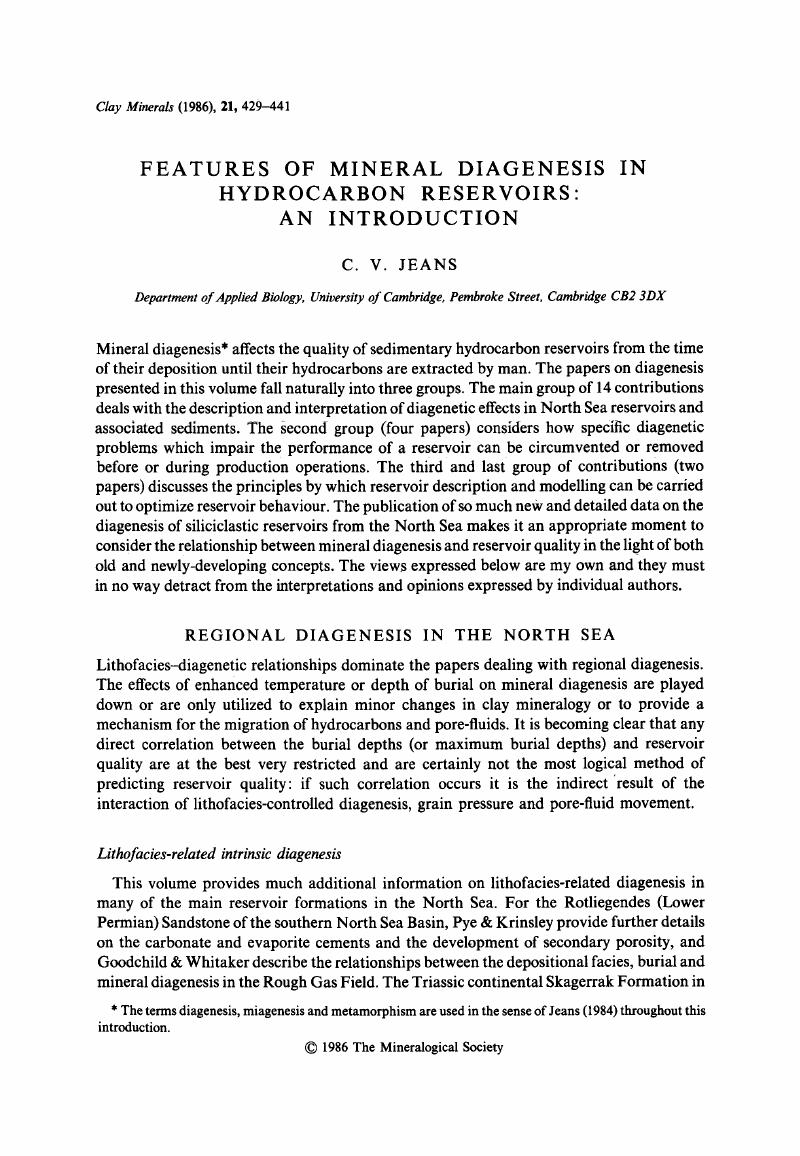Crossref Citations
This article has been cited by the following publications. This list is generated based on data provided by Crossref.
Germann, Peter F.
and
Douglas, Lowell A.
1987.
Comments on “Particle transport through porous media” by Laura M. McDowell‐Boyer, James R. Hunt, and Nicholas Sitar.
Water Resources Research,
Vol. 23,
Issue. 8,
p.
1697.
BJØRKUM, PER ARNE
MJØS, RUNE
WALDERHAUG, OLAV
and
HURST, ANDREW
1990.
The role of the late Cimmerian unconformity for the distribution of kaolinite in the Gullfaks Field, northern North Sea.
Sedimentology,
Vol. 37,
Issue. 3,
p.
395.
Dypvik, Henning
and
Nesteby, Helge
1992.
The diagenesis of continental (Karoo-Tertiary?) siliciclastics from an East African rift valley (Rukwa-Tukuyu area), Tanzania.
Sedimentary Geology,
Vol. 78,
Issue. 3-4,
p.
251.
Jeans, C. V.
1994.
Clay diagenesis, overpressure and reservoir quality: an introduction.
Clay Minerals,
Vol. 29,
Issue. 4,
p.
415.
Moore, Duane M.
2000.
Diagenesis of the Purington Shale in the Illinois Basin and Implications for the Diagenetic State of Sedimentary Rocks of Shallow Paleozoic Basins.
The Journal of Geology,
Vol. 108,
Issue. 5,
p.
553.
Jeans, C. V.
Mitchell, J. G.
Fisher, M. J.
Wray, D. S.
and
Hall, I. R.
2001.
Age, origin and climatic signal of English Mesozoic clays based on K/Ar signatures.
Clay Minerals,
Vol. 36,
Issue. 4,
p.
515.
Jeans, C. V.
2006.
Clay mineralogy of the Cretaceous strata of the British Isles.
Clay Minerals,
Vol. 41,
Issue. 1,
p.
47.





